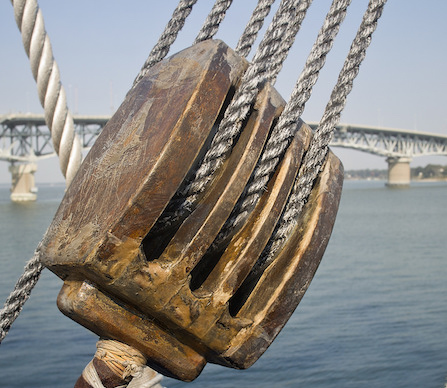Load transfer: The alpine block and tackle
Premium Members can read the entire article here:
This is part of a series of articles that cover methods to move a large load a short distance, typically to unweight an anchor.
If you tie your cordelette “bunny ears” style, as I recommend in this Tip, you can use it to make a low-tech block and tackle system. #CraftyRopeTrick for sure!
(History side note: The term “block” comes from the wooden blocks that were originally used on ships to raise heavy sails, and the “tackle” refers to the ropes/rigging running between the blocks.)
Climbers typically think that mechanical advantage systems only come into play in a rescue-type scenario. But there are some other situations where they can come in handy.
When might you want to use an alpine block and tackle?
In general, to move a large load a very short distance.
Maybe you're in some other kind of rescue scenario, and you need to momentarily lift a load off of a carabiner an inch or two to unclip something.
Maybe you're on a big wall climb, you screwed up your rigging somehow, and you need to lift your haul bag a few inches to get it unclipped. (Note, if you use a docking cord to attach your haul bag to the anchor, you should never have this problem.)
You have a strand of rope with a weighted knot, and you need to unweight the rope so you can untie the knot. To do this, put prusik loops above and below the knot, and rig the block and tackle between the two prusiks. See image below.
In the example shown in the video below, you can transfer or share the load in a crevasse rescue off a sketchy initial gear placement to a stronger second placement.




